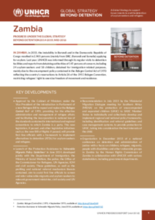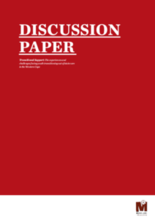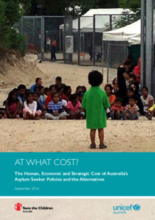Demographic Data
|
Sources: World Bank, UNICEF, UNDP HDR 2015, DHS 2011 |
Displaying 10301 - 10310 of 14391
This report identifies key communications challenges faced by experts and advocates as they seek to elevate support for public policies that will best serve the developmental needs of all children in South Africa.
This paper from Best Start (a global campaign for Early Childhood Development led by children’s charity Theirworld) emphasizes the need for holistic early childhood development (ECD) programs - Safe Spaces - for young children in emergency situations.
Strong Beginnings (SB) was an 18-month project purposed to promote an alternative care model that places emphasis on family based care of children, improving the quality of care within child care institutions, build capacities of government and non-government agencies in implementing alternative care; generate evidence and promote learning.
This briefing is based on a rapid review of the available literature on outreach work with children and young people. It is intended to provide the ReachOut project with an overview of different approaches to outreach; what it generally aims to achieve; what distinguishes it from centre-based work and how it is applicable to children and young people involved in, or at risk of, child sexual exploitation.
This tip sheet from Capacity Building for the States provides best practice intake screening questions for unregulated custody transfer/re-homing (UCT) of adopted children.
In Sierra Leone, as in conflict and postconflict settings around the world, youth are coping with their exposure to violence during conflict as well as the poverty and displacement that follow war and the stigma that can persist long after involvement with armed groups has ended.
According to this article, in 2015, the instability in Burundi and in the Democratic Republic of Congo resulted in 2,965 persons (mainly from DRC, Burundi and Somalia) applying for asylum in Zambia. Last year, UNHCR was informed that 147 persons of concern, including 24 asylum-seekers and 18 children were being detained for immigration-related purposes.
This paper initiates discussion by calling on Child and Youth Care (CYCCs) to offer transitional support to youth leaving care. It also intends to document and share information on new ways for youth to successfully transition out of care.
In this editorial, Laura Brigs discusses the issues that children face while attempting to apply for refugee status in the United States
This report explores the human, economic and strategic cost of Australia’s current policies which seek to deter asylum seekers from migrating to Australia by sea.








